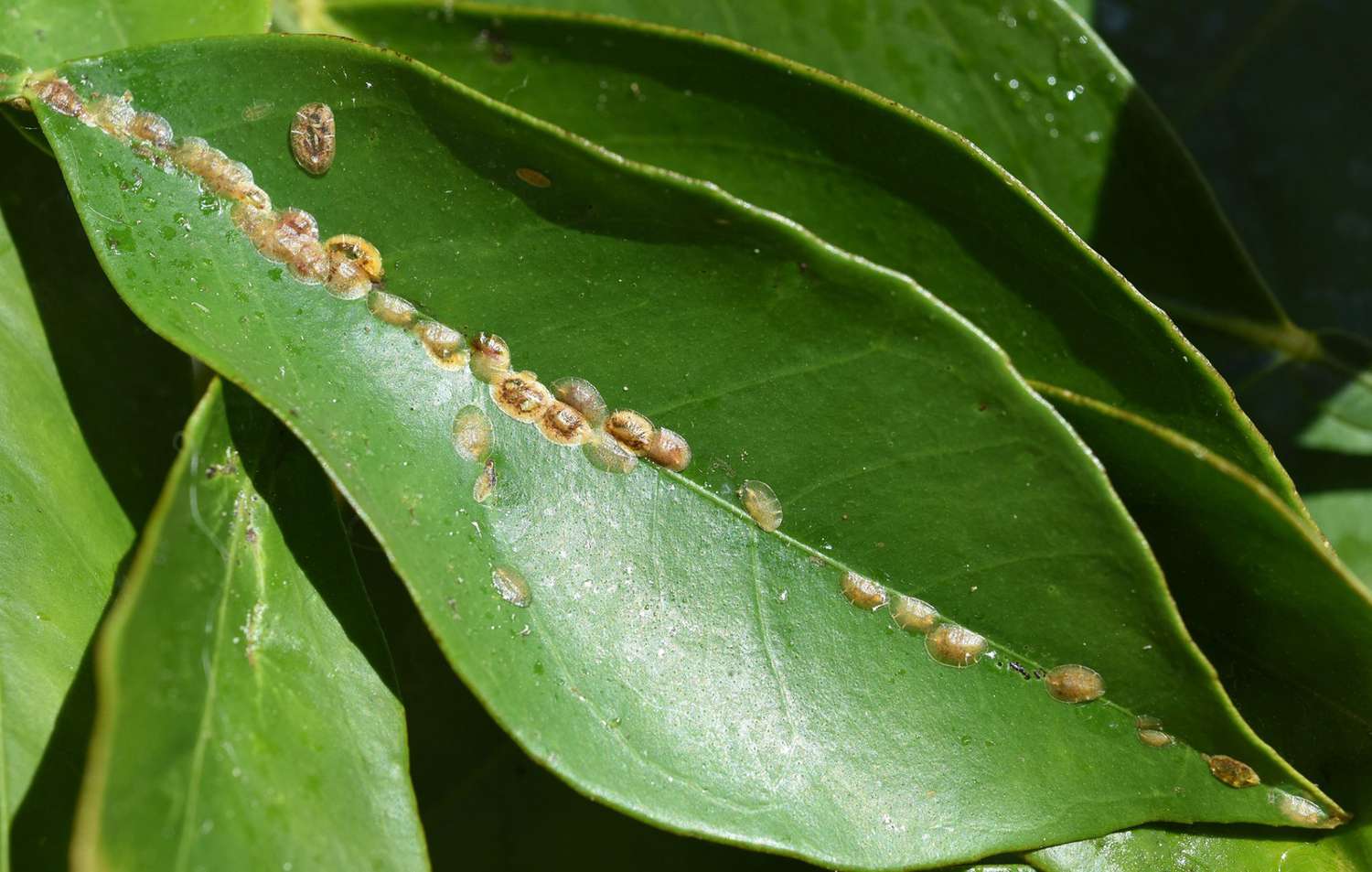Here are the Top 10 Houseplant Pests and How to get rid of them!
Houseplants may be displaced through the holiday season and it’s a difficult transition back to their ordinary place in the living room. Winter temperature, sunlight, and humidity may not be optimal, which makes them easy prey for plant pests that find their population increases rapidly. Don’t wait until your houseplants are struggling. Check your indoor plants regularly for signs of the top 10 houseplant pests.
1. Aphid
Aphids appear as small green, white, or black specks on any part of a plant. They pierce and suck the sap out of all parts of the plant, but especially like tender new growth and the underside of leaves. Aphids reproduce quickly with a complete infestation in just days.
Aphids are soft-bodied insects and can be killed quite easily with Bonide® Insecticidal Soap Spray. Focus spray on the underside of leaves and the outer tips of your plant. Repeat in a week to ensure all eggs are eliminated from your plant as well.
2. Broad Mites
Their favorite houseplants are African violet, begonia, cyclamen, and several others. They do considerable damage to the growing tips of these plants. Far too tiny to see with the naked eye, but if the tips of your houseplant look stunted, distorted or the leaves start curling, you should suspect mites.
Mites spread so efficiently that garden manuals recommend disposing of an infested plant. We recommend isolating the plant in the garage or a separate room and drench the infected plant with Bonide® Mite-X to see if the plant can recover before disposing of a valued plant.
3. Fungus Gnat
A pesky fly the size of a gnat that hovers around houseplants, iPad and computer screens or any light source for that matter. Flying adults are not the problem here, but the youngster or larval stage feeds on your plant’s roots. Gnats especially favor damp soil and darker rooms.
Sticky Traps quickly catch the adults, which cut down on the population. For complete control, we recommend applying Bonide® Systemic Granules with deep watering. Then allow the soil to dry out for several days to kill all remaining eggs and larvae. Dryer sheets are an excellent deterrent of future infestations.
4. Leaf Miner
Squiggly lines running through a leaf are a sure sign of this pest. Leaf Miners are the larvae of a small black fly. The fly lays its eggs in a leaf blade, and the larvae feed their way through the leaves until mature enough to fly.
Leaf Miner damage on edible greens, like Swiss chard and spinach often ruin the crop. On a houseplant, they are simply unsightly. You can trap the adults with blue sticky tape and remove any damaged leaves to keep new flies from emerging. Bonide® Neem Oil is the best known organic for this pest and can be used on edibles, or inside your home.
5. Mealybugs
Mealybugs look like small cottony white blobs, usually attached to the plant at the stem joints. They slowly feed on plants by sucking them to death. Plants infested with mealybugs often appear to be drying out, even when they have been watered.
Mealybugs are hard to get rid of. Repeated spray treatments of Bonide® Insecticidal Soap can be effective. The mealybugs spread fast indoors. If your plant is severely infested, it is best to throw it away and start over.
6. Scale
This tiny insect that attaches to the stem of a plant then covers itself with a hard, oval-shaped shell. Like mealybugs, they slowly suck the sap from the plants, leaving them too weak to sustain themselves.
A scale infestation is tough to rid. Pesticides often don’t penetrate their hard-outer shell. You can rub some off with a fingernail or soft brush. Spraying every 10 days with Bonide® Neem Oil and drenching the roots with Bonide® Systemic Granules is your best solution.
7. Spider Mites
Mites leave spider-like webbing on the inside of plants, especially those with this lush foliage and pine-like evergreens. Growing to the size of a pinhead and injure plants by sucking their juices dry. Infected leaves turn totally yellow, brittle and quickly die.
Isolate infested plants and spray with Bonide® Mite-X or Bonide® Neem Oil at 14-day intervals until symptoms are gone, and no more webbing is found on the plant.
8. Springtail
This tiny wingless bug jumps like a flea several inches in the air when disturbed. With one or two insects on a plant, you hardly notice, but when infected, the effect is like a small cloud jumping from the plant. Very disturbing.
They favor dark rooms with moist potting soil. Springtails feed on roots with only a little stress on your houseplants. You really notice this pest when the soil dries out, and they wander for moisture in the basement and bathrooms that become a nuisance. Vacuum this insect up or dust the plant’s soil with Diatomaceous Earth.
9. Thrips
These tiny insects (less than 1/25 of an inch) can do a lot of plant damage. They feed in groups, scrapping leaves, flowers dry and doing horrible damage to fruits. Thrip attack in such numbers they weaken plants, distort growth and spread disease.
There are no natural predators for this insect indoors, so spray the entire plant with Bonide® Mite-X at 10-day intervals until new growth emerges clean and without distortion. Focus primarily on the underside of leaves where they like to hangout.
10. Whitefly
These tiny whiteflies tend to hide out on the underside of leaves and fly up in a puff when disturbed. They suck on leaves and stems, weakening plants and causing distortions and discolorations. Whiteflies produce very quickly, so catching them early will make eliminating them easier.
Catch them with Yellow Sticky Traps or spray the entire plant with Bonide® Insecticidal Soap. The spray must make contact with the insect directly to work. You will most likely need to repeat this spray at least once more for proper control.
Now that you know what the top 10 houseplant pests are, you can keep an eye out for them!

